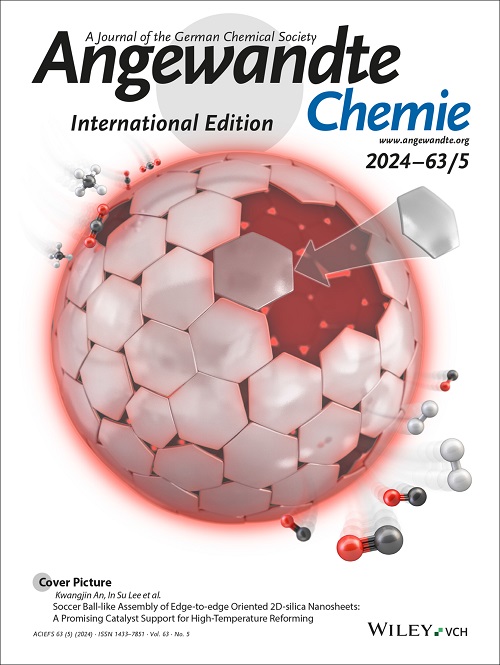Hubbard Gap Closure-Induced Dual-Redox Li-Storage Mechanism as the Origin of Anomalously High Capacity and Fast Ion Diffusivity in MOFs-Like Polyoxometalates
IF 16.1
1区 化学
Q1 CHEMISTRY, MULTIDISCIPLINARY
引用次数: 0
Abstract
MOFs-like polyoxometalate (POMs) electrodes have already emerged as promising candidates for lithium-ion batteries (LIBs), yet the origins of the underlying redox mechanism in such materials remain a matter of uncertainty. Of critical challenges are the anomalously high storage capacities beyond their theoretical values and the fast ion diffusivity that cannot be satisfactorily comprehended in the theory of crystal lattice. Herein, for the first time we decode t2g electron occupation-regulated dual-redox Li-storage mechanism as the true origin of extra capacity in POMs electrodes. Enhanced V-t2g orbital occupation by Li coordination significantly triggers the Hubbard gap closure and reversible Li deposition/dissolution at surface region. Conjugated V-O-Li configuration at interlayers endow Li+ ion pathways along pore walls as the dominant contribution to the low migration barrier and fast diffusivity. As a result, remarkable cycle stability (~100 % capacity retention after 2000 cycles at 1 A g−1), extremely high specific capacity (1200 mAh g−1 at 100 mA g−1) and excellent rate performance (404 mAh g−1 at 8 A g−1) were achieved, providing new understandings on the underlying mechanism of POMs electrodes and pivotal guidance for dual-storage materials.哈伯德间隙闭合诱导的双氧化还原锂存储机制是 MOFs 类聚氧化金属酸盐中异常高容量和快速离子扩散性的起源
MOFs 类聚氧化金属(POMs)电极已成为锂离子电池(LIBs)的理想候选材料,但这类材料的基本氧化还原机制的起源仍是一个不确定的问题。最关键的挑战是超出理论值的异常高存储容量,以及晶格理论无法令人满意地理解的快速离子扩散性。在此,我们首次解码了 t2g 电子占据调控的双氧化还原锂存储机制,这是 POMs 电极额外容量的真正来源。锂配位增强的 V-t2g 轨道占据极大地触发了哈伯德间隙的闭合以及锂在表面区域的可逆沉积/溶解。层间的共轭 V-O-Li 构型赋予 Li+ 离子沿着孔壁的通路,是低迁移障碍和快速扩散的主要原因。因此,该电极实现了卓越的循环稳定性(在 1 A g-1 条件下循环 2000 次后容量保持率约为 100%)、极高的比容量(在 100 mA g-1 条件下为 1200 mAh g-1)和优异的速率性能(在 8 A g-1 条件下为 404 mAh g-1),从而为 POMs 电极的基本机理提供了新的理解,并为双存储材料提供了重要指导。
本文章由计算机程序翻译,如有差异,请以英文原文为准。
求助全文
约1分钟内获得全文
求助全文
来源期刊
CiteScore
26.60
自引率
6.60%
发文量
3549
审稿时长
1.5 months
期刊介绍:
Angewandte Chemie, a journal of the German Chemical Society (GDCh), maintains a leading position among scholarly journals in general chemistry with an impressive Impact Factor of 16.6 (2022 Journal Citation Reports, Clarivate, 2023). Published weekly in a reader-friendly format, it features new articles almost every day. Established in 1887, Angewandte Chemie is a prominent chemistry journal, offering a dynamic blend of Review-type articles, Highlights, Communications, and Research Articles on a weekly basis, making it unique in the field.

 求助内容:
求助内容: 应助结果提醒方式:
应助结果提醒方式:


